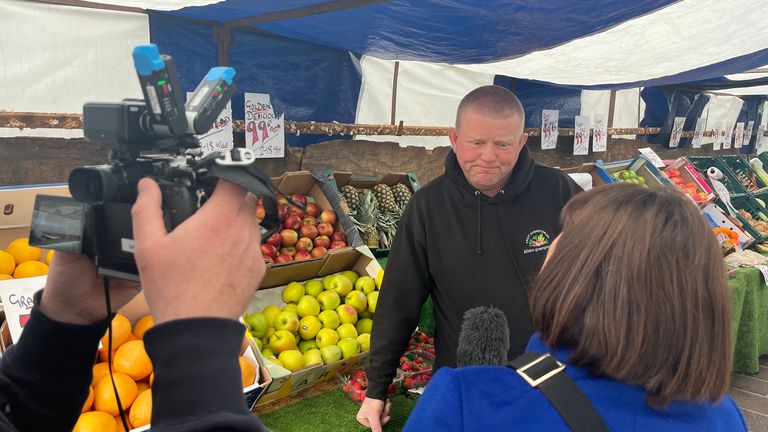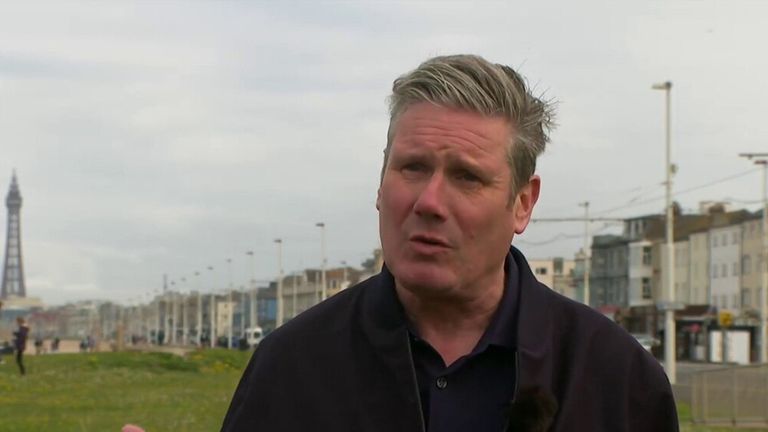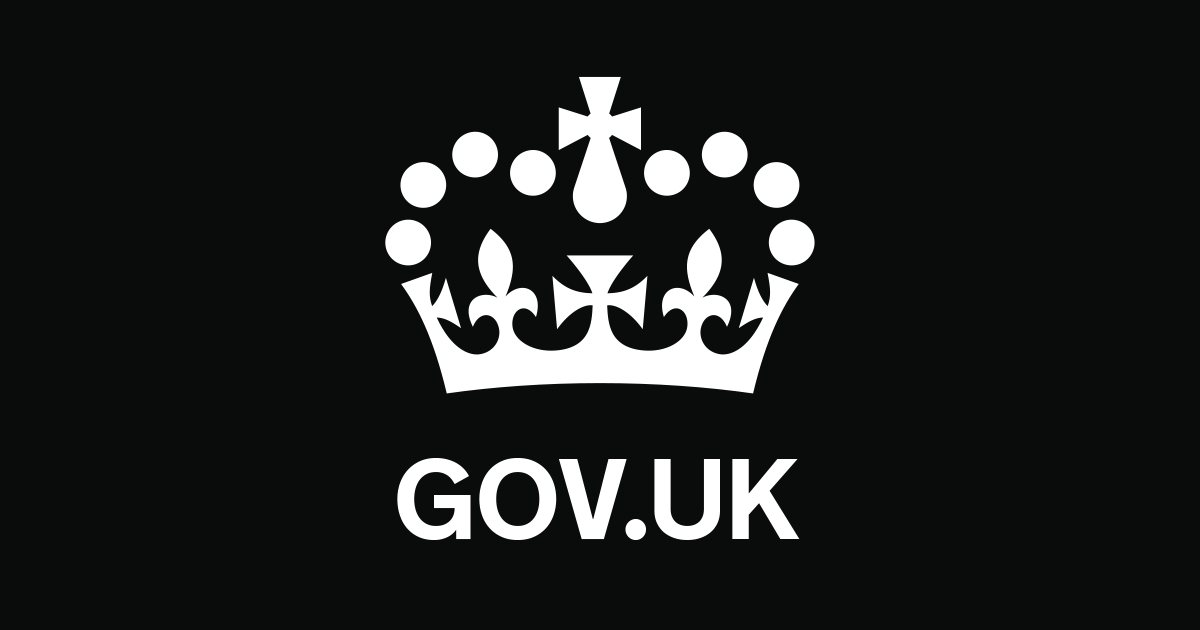As Labour eyes gains in the local elections, voters have one pressing issue on their minds | Politics News
At the Sprouts community café in Stockton in the northeast of England, voters have one pressing issue on their minds: The cost of living.
Everyone I talk to over a chicken stew and dumplings lunch has a story to tell about struggling to make ends meet.
Janine, who has a young daughter, says she can only afford to pay her gas and electric bills while the rest – TV licence, council tax – are having to wait.
“I’m getting letters through the doors, we’re in arrears and obviously the anxiety goes high and then I think, no they’ll have to wait, I need to keep my daughter warm,” she says.
Michelle tells me that she surfs supermarkets trying to find the cheapest price for foodstuffs, while Callum, who’s in his 20s and lives with his mum, says he and his friends can’t afford to socialise anymore: “With all the bills, I think we’ve only got about £60 left over for food and drink in the house.”
Politics live: Two unions gearing up for more strikes despite NHS pay offer breakthrough
It is the backdrop of soaring bills and voters’ struggles, rather than the political noise around recent Conservative chaos, that Labour believes will hurt the Tories when millions of voters across England go to the polls in this week’s local elections.
“This Sunak is competent narrative is overdone,” is how one senior Labour figure puts it.
“We’re going to the polls and food price inflation is 19.1%, wider inflation at 12%. Voters want the government to deliver on this but Sunak’s not addressing those problems, and that’s why I think they’ll do badly.”
And Sir Keir Starmer will need the Conservatives to do badly in places like Stockton-on-Tees to prove he’s on track for a victory in next year’s general election.
Labour lost control of this council in the local elections of 2019 when the red wall began crumbling ahead of the Boris Johnson bulldozing of Labour lands in the general election late that year. If he’s to have any hope of winning an outright majority, Sir Keir has to win places like Stockton back.
On Thursday, there will be 230 councils in play, and 8,000 seats up for grabs across almost 5,000 wards.
We’ll be looking at how many seats Labour win and the Tories lose; what percentage of the vote the main parties win and how that reads across to a general election; and who has momentum in the swing seats that will decide the next election – be that places like Stockton and Darlington in the North, Walsall or Dudley in the West Midlands or Swindon, Plymouth and Medway in the South.
This then a box office set of local elections that will provide us with the largest test of public opinion before the next general election and as such holds huge significance.
Can Sir Keir Starmer show he remains on course to beat the Conservatives next year?
For a Labour majority he needs to do better than Tony Blair in 1997: so is he looking as strong as the former Labour prime minister in the locals before that landslide win? Or can Rishi Sunak minimise Conservative losses and offer his ailing party a slither of hope?
A headline test for Mr Starmer will be whether Labour can finally end two decades of Conservative dominance as the largest party in local government.
The Conservatives managed to do that in 2003, seven years before David Cameron won the 2010 general election, while Neil Kinnock achieved it six years ahead of the Blair landslide of 1997.
Sir Keir needs a net switch of 400 seats from the Tories to Labour to take the title with just about a year to go before we find out if he can also take Number 10.
And what about showing Labour can become the largest party at Westminster?
Local election experts Professors Colin Rallings and Michael Thrasher suggest Labour need around 700 net gains overall for that. And even then, they’d be shy of an outright majority.
At 450, the results would be little better than a year ago – not the momentum Sir Keir needs to bulldoze his way into Downing Street.
Anything less will be a blow: 250 net gains would mean disappointing progress in the crucial “Red Wall”; while lower than that and Sir Keir would be in reverse at this critical staging post.
Labour will be looking to make their gains in places they need to win back at a general election. Red Wall places like Hartlepool, Stoke, Stockton, Middlesbrough, and Walsall; and marginal parts of the South like Swindon where Sir Keir kicked off his campaign. Whole council elections mean even places like Medway in Kent could be Labour targets.
Well behind Labour in the polls and still trying to combat the Tory toxification caused by Johnson and Truss, Rishi Sunak is bracing for a bruising. Rallings and Thrasher suggest the Conservatives could lose over 1,000 seats, a third of what they’re defending.
This will spell troubles for every type of Tory-held territory from the “Red Wall” in the North and Midlands to the “Blue Wall” in the South.
If the Tories can keep the losses to around 750, it would show a clear swing to Labour but not to big double-digit leads current opinion polls imply. If the prime minister can hold his losses to 500, he might try to write them off as “mid-term blues” and hold out hope that Labour can be caught before a general election.
Talk to those in Conservative Campaign Headquarters, and they agree it’s going to be a tough night – something party insiders pin on politics rather than policy.
“Last year, voters were slamming the door in our faces, but now they are giving us time to talk,” says one senior party insider. “That’s the detoxification led by Sunak. It doesn’t mean they’ll be voting for us, but they’re perhaps less likely to vote for someone else. We’ve got no illusions about the position we’re in, but we are moving in the right direction.”
But it’s not just Labour the Tories have to watch.
The Lib Dems will be looking to take out bricks in the “Blue Wall” Lib Dem/Conservative battlegrounds of the South.
Some 150 net gains or more will show Sir Ed Davey’s party eating into Tory territories and endangering marginal constituencies. Fewer than 50 gains might suggest that, despite symbolic by-election wins in Beaconsfield and Tiverton and Honiton, the Lib Dems are struggling to pose a real threat to the Tories in the South.
That’s the seats, what about the vote share? One way Sky News will indicate what these local battles tell us about the national picture is through the “National Equivalent Vote”. This is an estimate of how the parties have fared if local elections had taken place in every part of the country and will give us the basis for a Sky News House of Commons projection.
Professor Will Jennings, Sky News election analyst, points out though historical data shows that governing parties tend to do better at general elections than in the preceding local elections as voters “swing-back” to the government after a period of mid-term blues.
“A solid set of local election results might give the Sunak government hope for the general election,” argues Professor Jennings.
What Labour will be looking for is a swing big enough to give weight to these set of locals preceding the big “change” general elections of 1979 and 1997. In those two elections the government’s swing back from locals to the national poll stood at just 0.7% and 2.5% respectively.
However, recent history tells us local election performance doesn’t always translate to a national contest.
Professor Jennings reminds us that the drubbing the Tories took in May 2019 was followed seven months later by Boris Johnson’s romping general election win, albeit after a leadership change.
Read More:
Local elections 2023: Red wall set to abandon Conservatives, projection suggests
Local elections 2023: Voter ID, contested seats and everything else you need to know
Equally, expectations can be raised only to be dashed. Neil Kinnock crashed out in 1992 despite some good local elections and the Tories failed miserably in the Blair years despite strong showings in 2001 and 2005.
And as politicians spin and psychologists dissect the results, the important figures to keep at the forefront of your mind are the ones that measure the scale of Labour’s challenge at the next general election.
A swing of 12 percentage points from December 2019 is required by Labour to win a majority – and that requires a swing even bigger than the post-war record that Blair achieved in 1997.
To give you another sense of the scale of the task: Sir Keir needs to gain 124 seats to win outright. Labour has done that only three times in the past 100 years: 1929 when the party substantially increased its number of candidates; and in 1945 and 1997 when both wins were in landslide territory.
Even to achieve the more reachable goal of becoming the largest party, Labour will need the second largest swing in post-war history – seven percentage points.
Stockton-on-Tees, or Darlington or Durham then just the start for Sir Keir Starmer.
The Labour leader will need to win seats and councils directly from the Conservatives in all parts of the country – not just in the Red Wall, but across the Midlands and into the South.
It is quite simply a gargantuan task – and Friday will give us a better sense of whether he’s really on that path to power.






